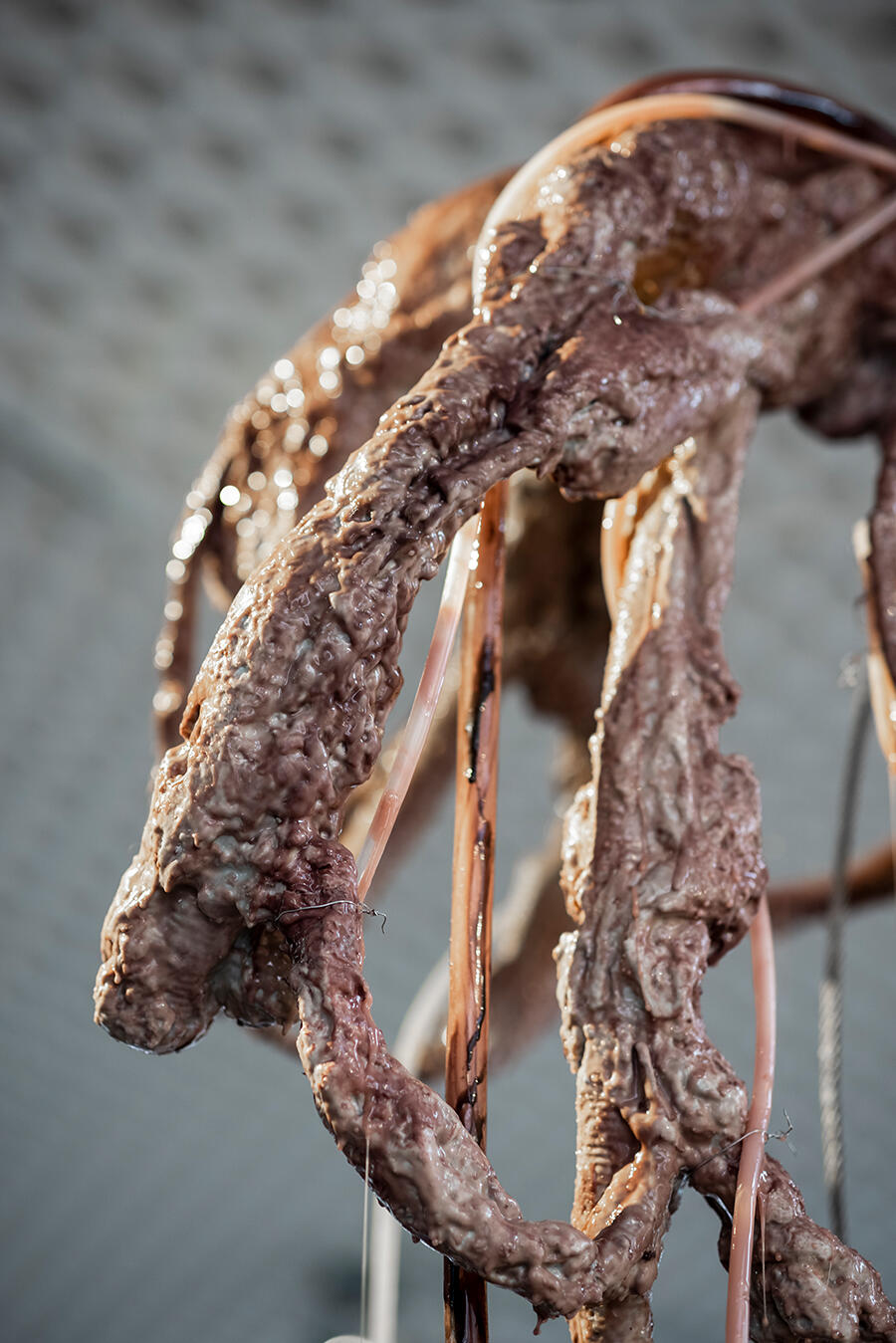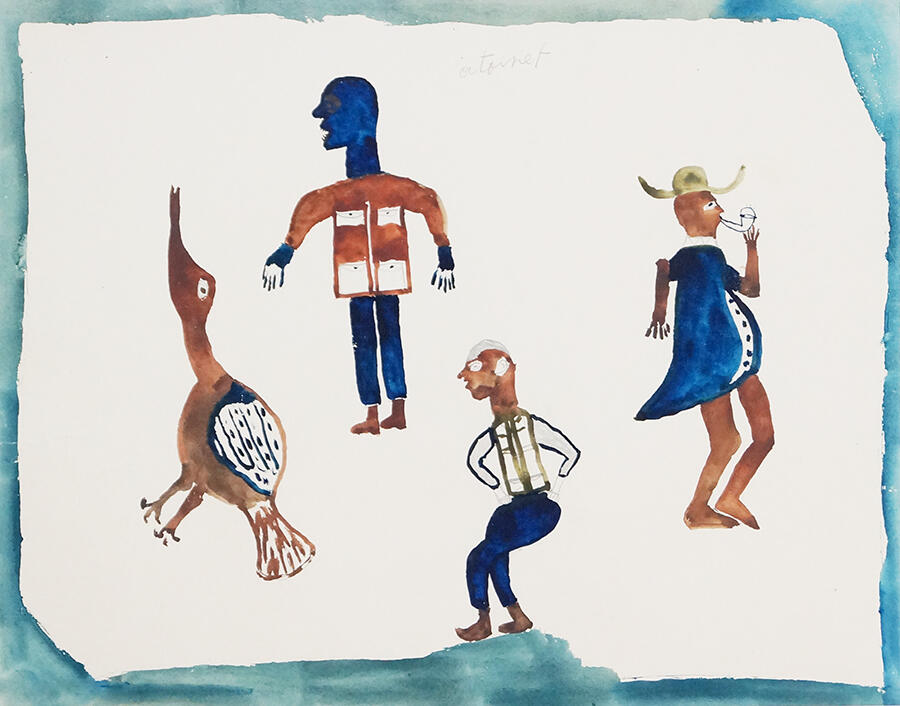Preview of the 2022 Venice Biennale Part One: ‘The Milk of Dreams’
The frieze team selects the projects they are most looking forward to at the Giardini’s Central Pavilion and the Arsenale
The frieze team selects the projects they are most looking forward to at the Giardini’s Central Pavilion and the Arsenale

This April, the Venice Art Biennale returns after a three-year pandemic-related hiatus (preview days 20–23; first public opening day 23 April; runs until 27 November). In the first of our five-part preview, frieze editorial staff name the artists they're most looking forward to seeing in the central international exhibition. To read part two of ‘The Milk of Dreams’ preview, click here.
Dora Budor

Trained as an architect, Dora Budor has developed an art practice that deconstructs the history and politics of buildings: the materials that make them, the way we move through them, how they implicate their surroundings. In her project Continent (2022) at Kunsthaus Bregenz, Budor investigates the foundations supporting the institution’s Peter Zumthor-designed building, specifically the duct surrounding it that prevents both groundwater seepage and the collapse of nearby structures. Her well-researched and often collaborative works reframe the way we perceive the buildings they occupy, while her materials are usually returned to the environments from which she found them.
– Marko Gluhaich, Associate Editor
Ali Cherri

Ali Cherri’s practice considers the political, geological and archaeological legacies of the artist’s home country of Lebanon, especially during its Civil War (1975–90), as well as neighbouring countries in the region. Cherri studies and tackles the very notion of the nation state through tangible cultural heritage, with a keen interest in the ways the museum and its practices can be challenged, as well as in how that heritage can help construct a historical narrative. Cherri was artist-in-residence at London’s National Gallery in 2021, with the results of his year of research culminating in the current show ‘If you prick us, do we not bleed?’. Here, Cherri studies the occurrences of vandalism to works in the collection, including a knife slash to Federico Barocci’s Madonna of the Cat (1575) and a visitor spraying paint on The Adoration of the Golden Calf (1633–34) by Nicolas Poussin. Cherri’s curiosity is piqued by our responses to these acts of vandalism and whether a museum collection being ‘wounded’ in this way prompts collective trauma. In his works and practice, Cherri highlights the ways in which we construct a sense of nationhood, how that in itself is a form of power, and how that power can be challenged.
– Vanessa Peterson, Associate Editor
Agnes Denes

A few years ago, New York’s The Shed mounted the first US retrospective of Agnes Denes. Her work had only been partly known in the city, and mostly through the field she once planted outside the World Trade Center. This installation, Wheatfield – A Confrontation: Battery Park Landfill, Downtown Manhattan (1982), generated the now-famous images of Denes walking through tall grass with a staff, the towers of the financial district looming behind her. After 9/11, the images exuded a new poignancy; so much was lost. But this astonishing retrospective showed the full-range of her multi-faceted practice – from large-scale public sculpture to architectural drawings to painting – and explained Denes as a communicator of our ecological precarity, one for whom the wheatfield was a small, if prescient, part of a broader approach to rethinking landscape and architecture within the coordinates of conceptual art. For decades, she has focused on landscape, urban life, nonhuman intelligence, and how we might live in an uninhabitable world. In ‘The Milk of Dreams’, you can expect these issues to be grounded in Denes’s subtle, sensitive sculpture or installation, possibly while considering the famously flood-prone city hosting the biennale. The implications of the world outside the exhibition space are never far from Denes’s work.
– Andrew Durbin, Editor-in-Chief
Maya Deren

Maya Deren’s Meshes of the Afternoon (1943) merged surrealism with film noir, defining experimental US cinema at the time by merging an American sensibility with that of Luis Buñuel and Salvador Dalí. Melissa Gronlund described her practice for frieze in 2007: ‘Deren aimed for the measured rhythm of myth and ritual, and her remit was the expression of universal truths […] Deren is, above all, a modernist filmmaker, concerned with the integrity of form and medium.’ She’ll be featured as part of ‘The Milk of Dreams’ in line with curator Cecilia Alemani’s overarching surrealist theme as an exemplar of the movement’s filmmaking.
– Marko Gluhaich, Associate Editor
Jessie Homer French

The creatures of Jessie Homer French’s latest oil paintings seem to be taking the clutter and wreckage of human industry in their stride. Moose, deer and wolves slink past crucified Christs, abandoned Ferris wheels and the radiation trefoils that ornament Chernobyl’s snowy exclusion zone in a series of paintings titled after the Ukrainian site (2018–20). Closer to her home in Mountain Center, California, Stealth Spring (2020) finds two rust-and-ash-streaked coyotes in the scrub below several Joshua trees; one stands with its head cocked to glower at the viewer; the other howls upwards at a silhouetted Sentinel drone. The fish of Oil Platform Fire (2019) loaf blithely among underwater tower scaffoldings while the offshore rig they gird combusts, though their cousins in Blowout (2020) are quite clearly gliding away from the fireball collapsing overhead. French, who is self-taught and regards herself as a ‘regional narrative painter’, has darkly humourized a back-and-forth of human and animal apathies. Humans who trespass on their habitats, sometimes in the form of spilled crude and radiation, should know better, her paintings seem to say.
– Patrick Kurth, Editorial Trainee
Kapwani Kiwanga

Trained as an anthropologist, Kapwani Kiwanga has a diverse artistic practice – encompassing film, photography and sculpture – that is both scholarly yet affective. Interested in the myriad ways power and canon-building can be studied, Kiwanga disrupts an audience’s idea of what historical memory is and how it functions. In a 2021 interview for Art Basel, Kiwanga notes the influence of the Black Audio Film Collective on her practice as not ‘necessarily an inspiration in terms of form but, rather, how they worked between different spaces, including “mass media”’. In Flowers for Africa (2013–ongoing), she re-creates the flower arrangements in found archival photographs taken during the African independence movements of the 1960s and ’70s, in countries including Angola and Cameroon. The poetry of the work lies in the natural lifespan of the flowers, which symbolize pan-African resistance movements.
– Vanessa Peterson, Associate Editor
Mire Lee

In 2020, in a gruesome vision of a bio-mechanical future, Mire Lee transformed Art Sonje Center in Seoul into an abattoir, complete with hanging innards-like tubes spurting a milky glycerine liquid in an entropic display. These intestinal sculptures formed Carriers (2020), a kinetic structure both repulsive and arousing, an anthropomorphic coil of silicone ‘veins’ pumping and oozing viscous fluids. The artist, who divides her time between Seoul and Amsterdam, uses her work to evoke both nightmare and eroticism; she draws upon dominance, submission and victimhood in her displays of fascination with monstrosity. Her self-proclaimed ‘obsession’ results in the pulsing biomorphic forms that remind us of both the inevitability of physical deterioration and the circular sabotage of self.
– Ella Slater, Editorial Assistant
Hannah Levy

In a 2017 interview for Mother’s Tankstation, Hannah Levy describes her work as ‘a design purgatory’, referencing the familiar absurdity of her objects, which are items taken from our built environment and altered to become unusual, alien forms. At first glance, her sculptures could be mistaken for hyper-minimalist furniture and homeware. However, a closer look reveals subtly erotic anthropomorphic additions: a skin-like corset is stretched taut by spiny fingers of steel (Untitled, 2021); nipples/valves protrude from the plump surface of a chandelier (Untitled, 2020). Beyond the initially perverse fascination it evokes, Levy’s sculpture proposes an intimate dialogue between body and object, conscious and unconscious, organic and uncanny.
– Ella Slater, Editorial Assistant
Antoinette Lubaki

Antoinette Lubaki was a Congolese artist who, together with her husband Albert, created watercolours on paper during the 1920s and ’30s: the first known use of the medium in the country. She used a limited palette to depict scenes from everyday life, creating playful and evocative images with a hint of abstraction. These works stemmed from an encounter with a Belgian administrator, Georges Thiry, who wished to preserve the art of her husband (previously, Albert had made his paintings on the walls of his hut) and gave him paper. Antoinette used some of the sheets to create her own works. The preservation of Antoinette’s work has not been straightforward; rather, a convergence of colonial power, patriarchal power and the power of the white gaze have determined which works possess artistic merit and historical importance. As exciting as it is to have Antoinette Lubaki’s works on display at the biennal, their appearance in Venice poses the same questions around power and privilege within the art world that they did a century ago.
– Claudia Kensani Saviotti, Editorial Coordinator
Maria Sybilla Meriam

Beyond the novelty of seeing a bio that lists the artist’s birthplace as ‘the Holy Roman Empire’, I welcome the somewhat provocative inclusion of the late-17th-century naturalist and illustrator Maria Sibylla Meriam in the central exhibition. The contemporary in art is not always only contemporary art. Meriam’s work has inspired a range of artists – see Leonor Antunes’s permanent commission at The Box in Plymouth (Sequences, Inversions, Permutations, 2020) – while her sumptuous, fable-like illustrations of exotic flora and fauna (some observed in person on expeditions to South America) prompt reflections on gender, science and the animal, which resonate with many of the artists also included in the central exhibition, from Cecilia Vicuña to P. Staff.
– Matthew McLean, Editor, Frieze Week
Precious Okoyomon

Poet and artist Precious Okoyomon arrives in Venice on the back of an ambitious, two-year project that saw her transform the roof of the Aspen Art Museum into a large garden for invasive species – a decidedly risky undertaking in a city as manicured as Aspen. But it was exactly this perfection that Okoyomon wanted to contrast by creating a space for criminalized plants to thrive. In an interview for this magazine, she told Hans Ulrich Obrist: ‘We’re building the garden so that the roots are entangled. These invasive plants need intense root structures, and we’re planting them so they merge and hold each other in an intertwined system […] I think there’s something especially beautiful about getting to see that errant root system and how those connections happen...’ Okoyomon will likely bring this sense of entanglement and community – which appears elsewhere in her practice in the form of large dinner parties for artists and friends, as well as in her poetry – to Venice. And I anticipate the artist will complicate the notion with requisite discomfort and uncertainty – two qualities that set her work apart from many of her contemporaries – leaving us to wonder about who, how and what we rely on to survive.
– Andrew Durbin, Editor-in-Chief
For additional coverage of the 59th Venice Biennale, see here.
Main image courtesy: Jan Sandvik / EyeEm via Getty



















